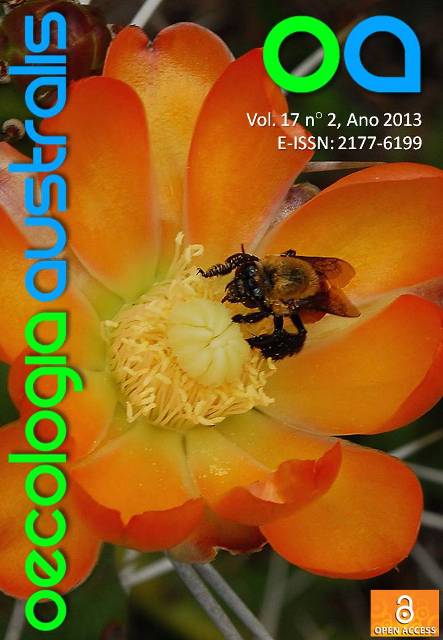STABLE ISOTOPES APPLIED TO THE MEASUREMENT OF PRIMARY PRODUCTION IN AQUATIC ECOSYSTEMS
Keywords:
Produção primária, produtividade primária, fotossíntese, respiração, carbono, oxigênio, isótopos.Abstract
Studies about the primary production in aquatic ecosystems have been conducted since about 100 years ago, and to date the primary production remains the biological process most commonly measured, either by quantifying the change in the concentration of dissolved O2 in water, or the accumulation of 14C in algal cells. However, both techniques have limitations. The change in dissolved O2 concentration needs to be measured both in the light and in the dark (or in open systems in 24h cycles), and there is no warranty that rates in the dark are the same that in the light. In addition, there is the problem that the respiration measured in the dark is the community respiration, and not the phytoplankton respiration. This is problematic for quantifying gross primary production. With the 14C method, the measured parameter depends on the duration of the incubation: 14C consumption in short incubations of a few hours is probably equivalent to gross primary production, but the consumption in long incubations around 24h duration is probably equivalent to net primary production. A way to avoid these problems is the simultaneous measurement of the changes in concentration and stable isotope composition of oxygen or carbon in incubations done in closed systems. Another is the measurement of oxygen isotopes, including the rare 17O, in open systems, but with low temporal resolution. The application of techniques based on stable isotopes has revealed several aspects of aquatic system metabolism that were unknown with the sole application of the classic techniques, indicating that the information obtained with the classical methods are not enough for correctly understanding the studied processes.


